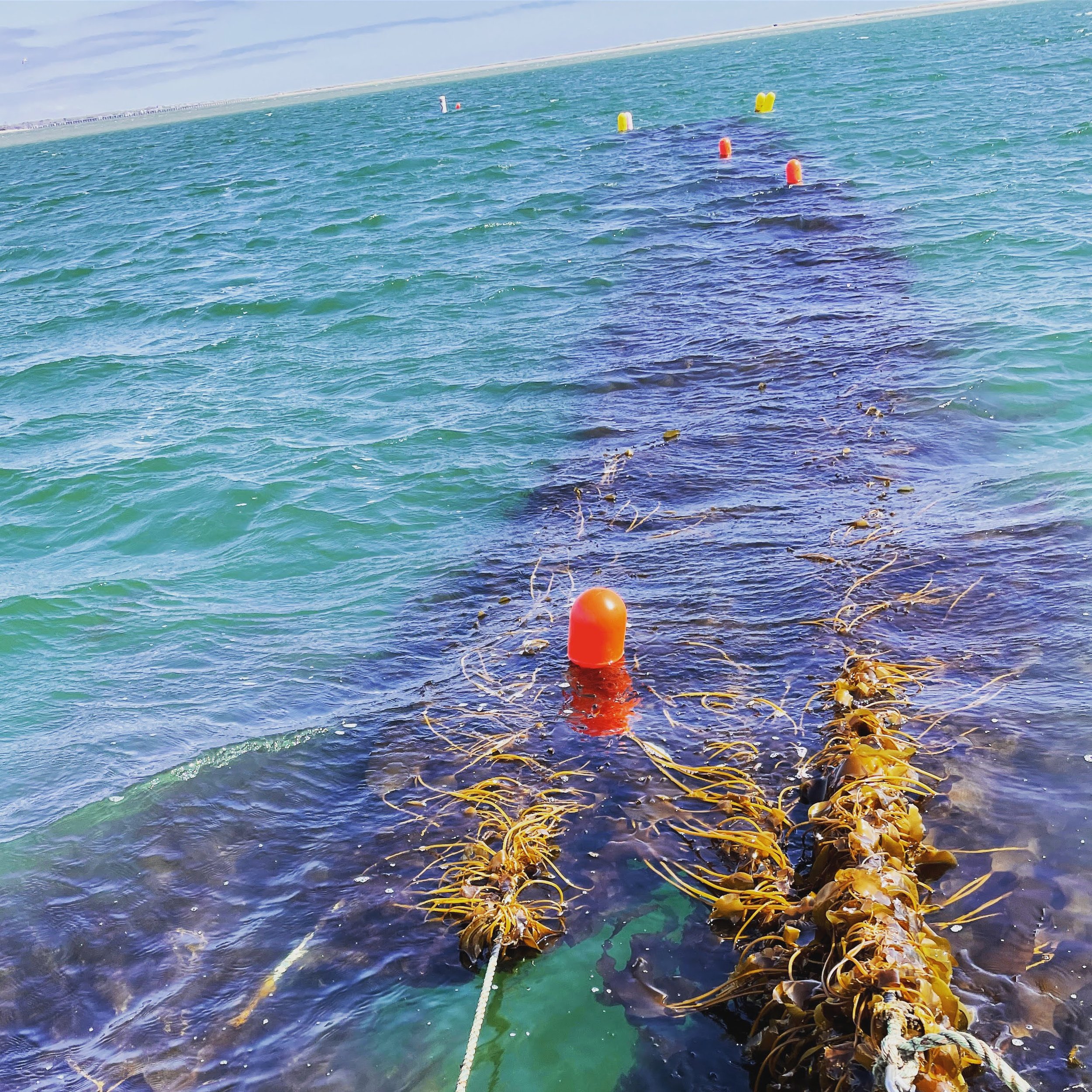Kelp Facts
-

What is Kelp?
Kelp is a large brown marine macroalgae species native to New England and traditionally wild harvested for food.
There are over 30 different species of kelp worldwide, but on our farm we grow Sugar Kelp (Saccharina latissima), which is also known as Sea Belt, or the Devil’s Apron because of its long brown blades that have ruffled edges and an undulating appearance.
While we grow kelp primarily as a human food source, it is also has multiple uses including plant fertilizer, bioplastics, biomedicine, textiles, cosmetics, and animal feed.
-

How is Sugar Kelp Farmed?
Sugar Kelp is a zero input crop that grows in cold ocean waters, which means that it requires no feed. Sugar kelp produce their own food through photosynthesis, using sunlight, carbon dioxide, and ocean water.
Sugar kelp provides net environmental benefits by removing excess nutrients and carbon dioxide and releasing oxygen to mitigate against ocean acidification.
Most kelp farmed in North America (and globally) uses systems of vertical lines to maintain depth. The DSK Farm uses “rope-less” solutions that grow close to the ocean floor.
-
Kelp as Food
Sugar kelp can be eaten raw or cooked, and is known to have an “umami” flavor. While some people will put kelp at the center of the plate, most uses will be more subtle. Check out our recipes for kelp cooking ideas.
Studies show that sugar kelp is rich in over 30 minerals, including iodine, iron, calcium, magnesium, potassium, folate, copper, zinc, nickel, and vitamin K.
Kelp also produces a compound called sodium alginate. Food manufacturers use sodium alginate as a thickener in many foods, including ice cream and salad dressing. Studies also suggest that alginate may help stop the gut from absorbing fat; so you can eat your kelp ice cream and lose weight too!


